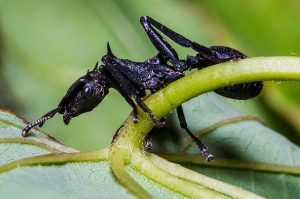 Music
Music  Music
Music  History
History 10 Less Than Jolly Events That Occurred on December 25
 Weird Stuff
Weird Stuff 10 Funny Ways That Researchers Overthink Christmas
 Politics
Politics 10 Political Scandals That Sent Crowds Into the Streets
 Weird Stuff
Weird Stuff Ten Bizarre Facts About The Doge Meme
 Our World
Our World 10 Ways Your Christmas Tree Is More Lit Than You Think
 Movies and TV
Movies and TV The 10 Coolest Stars to Set Sail on The Love Boat
 History
History 10 Things You Didn’t Know About the American National Anthem
 Technology
Technology Top 10 Everyday Tech Buzzwords That Hide a Darker Past
 Humans
Humans 10 Everyday Human Behaviors That Are Actually Survival Instincts
 Music
Music 10 Surprising Origin Stories of Your Favorite Holiday Songs
 History
History 10 Less Than Jolly Events That Occurred on December 25
 Weird Stuff
Weird Stuff 10 Funny Ways That Researchers Overthink Christmas
Who's Behind Listverse?

Jamie Frater
Head Editor
Jamie founded Listverse due to an insatiable desire to share fascinating, obscure, and bizarre facts. He has been a guest speaker on numerous national radio and television stations and is a five time published author.
More About Us Politics
Politics 10 Political Scandals That Sent Crowds Into the Streets
 Weird Stuff
Weird Stuff Ten Bizarre Facts About The Doge Meme
 Our World
Our World 10 Ways Your Christmas Tree Is More Lit Than You Think
 Movies and TV
Movies and TV The 10 Coolest Stars to Set Sail on The Love Boat
 History
History 10 Things You Didn’t Know About the American National Anthem
 Technology
Technology Top 10 Everyday Tech Buzzwords That Hide a Darker Past
 Humans
Humans 10 Everyday Human Behaviors That Are Actually Survival Instincts
10 Frightening Tricks Parasites Use to Snare Hosts
Evolution is not a friendly process. It works via blind forces and only favors those with mutations that help individuals pass on genes. This can lead to organisms with sublime appearances and traits we find impressive. It can also lead to some terrifyingly sneaky parasites.
Parasites are everywhere. Almost every species will have another species that has evolved to latch on or inside it and steal nutrients from it. Sometimes all a parasite has to do is fly up and bite you. Still, some parasites have fiendishly complex life cycles which require multiple hosts to complete.
Here are 10 tricks that parasites use to trap their hosts.
Related: 10 Deadly Viruses And Bacteria Created In Labs
10 Mind Control
Perhaps the most famous parasite at the moment is the cordyceps fungus which preys on jungle ants and other insects. Thanks to a starring role in HBO’s The Rest of Us, where they have adapted to infect humans and turn them into ferocious zombies, everyone knows how parasites can control a host’s mind. How they do this is both subtle and scary.
Ants tend to stick fairly close to the jungle floor as that is where most of their food is. Being on the ground is not what the fungus needs. It needs to be high up if it is to catch another ant to grow in. By sending small growths into the ant’s brain and releasing chemical signals, it causes the ants to climb up plants. Once high enough, but not too high, the fungus causes the ants to bite down on the vein on the underside of a plant leaf. This is known as the death bite, as the ant will remain anchored to this spot even when dead.
In this position, the fungus is ready to flourish. Having eaten all the nutrients inside the ant, it bursts out of the ant’s exoskeleton and builds a tall spike that will release spores. From the high vantage spot, the spores rain down on the ants below, and a new generation of infection and control can begin.
This parasitic mind control is at least 48 million years old, as fossil ants still stuck in the death bite position have been found.[1]
9 Make Hosts Sociable
When we look at flamingos, we marvel at how pink they are, but few people realize why they are the shocking shade they are. Some will tell you it is because they eat pink shrimp, but this is only half the answer. It all comes down to parasites.
Many people kept sea monkeys as children. However, instead of the fun and playful creatures on the packaging, these monkeys are really small shrimp. They also make up a majority of what flamingos eat and give the birds their pink color.
But the reason sea monkeys go very pink is because they are infected with a tapeworm called Flamingolepis liguloides. These worms grow to adulthood inside flamingos, but to get there, they must be eaten by the birds, so they make their sea monkey hosts as attractive as possible. They cause the sea monkeys to turn red for easy visibility and make the shrimp gather together in large swarms by making them more sociable. A fun party for the shrimp… until they are eaten.[2]
8 Pretend to Be Their Children
When you see a beautiful butterfly fluttering by, it probably does not make you think of parasitism. The large blue butterfly, which has one of the most descriptive names in nature, starts its life by tricking ants into caring for it.
The butterfly, Phengaris arion, has evolved so that its young look similar to the larvae of myrmica ants, but the subterfuge goes much deeper. The butterfly larvae also smell like the ant’s young. Once hatched, the butterfly larvae will drop onto the ground near an ant nest and wait for an unsuspecting ant to come by. Finding what it thinks is an ant larva that has escaped the nest, the ant drags it inside. The butterfly larva is then fed and tended by the ants until it is ready to emerge.
Several butterflies in this family have similar parasitic tendencies, and each will have a species of ant that it prefers to be raised by based on the specificity of the chemical substances it uses for trickery.[3]
7 Make Them Look Like Fruit

When your parasitic life cycle involves several hosts, it can be tricky to move from one to another. One of the methods favored by many parasites is to get your first host eaten by your next host so that you are taken directly to your next home. To help this happen, parasites often change the appearance of their host.
The South American ant Cephalotes atratus is not very notable. It is plain black in color, and its only party trick is being able to glide when it falls by using its legs. Its thick black plating makes it a vaguely unattractive prey for birds. That all changes when it is infected by the nematode parasite Myrmeconema neotropicum.
On infection, the parasite causes the ant’s exoskeleton to grow much thinner. This makes them easier to eat, but it also thins it to change the ant’s color. Pushing red pigments toward the surface of the ant’s body makes its abdomen resemble a red berry. Birds then swoop down and eat the “berries,” which allows the parasite to move to its next host.[4]
6 Attracting Predators
Snails do not have a glamorous life. Crawling slowly along the ground, they can be infected with any number of parasites. One of them is the psychedelic Leucochloridium paradoxum, which directly causes its host to be eaten in an eye-catching way.
This parasitic fluke invades the snail and slowly extends throughout the snail until it has consumed around 20% of its host. It then develops brood sacs which push into the eye stalks of the snail and begin to pulsate. These moving, green-banded protuberances will draw the attention of any passing bird looking for an easy meal. To make doubly sure that the snails are eaten, the parasite changes the snail’s behavior so it is more likely to remain in well-lit places.
Once the snail has been consumed, the parasite migrates to the bird’s digestive tract and begins laying eggs. These fall to the ground in the natural course of birds pooping, waiting for a snail to slither over them.[5]
5 Pretend to Be a Mate
Sometimes nature can be cruel to just one sex of a species. The male angler fish, for instance, is little more than a parasite on the female of its species. As it is thousands of times smaller than the female, it simply latches on to the skin of a female and dissolves the rest of its body except the testicles so that it can pass sperm to the female.
In the insect world, however, there is a parasitic beetle that only targets males. The larvae of the blister beetle, Meloe franciscanus, have a cunning trick to get themselves into a bee hive. When they hatch, they climb a plant and huddle together in a ball. They then begin to release a powerful hormone that attracts male digger beetles, which are fooled into believing there is a female ready to mate. As the bee attempts to mate with the writhing ball of parasites, they climb aboard the bee. When the male bee does, eventually, find a real female to mate with, the larvae climb across to her and are carried to a hive.
Once in the hive, the beetle larvae are fed as if they were the bee’s young but will also consume the bee’s larvae.[6]
4 Make You Gay
Periodical cicadas have an extraordinary life cycle of their own. Huge swarms of them emerge from the ground to breed every 13 or 17 years. After spending over 99% of their lives underground and developing, the cicadas have just a few short weeks to create the next generation before dying. That makes the parasitic fungus Massospora cicadina seem even more cruel.
Its spores settle in the soil and infect the cicadas as they dig their way out of the ground for their brief moment in the sun. Once infected, the fungus entirely takes over the abdomen of the host. This makes it look as if the back end of the cicada is rotting off, leaving only a large white mass. This large fungal body disperses spores onto the ground below and any other cicadas that get too close. Infected individuals have been called “flying salt-shakers of death.”
When male cicadas are infected, they begin to flick their wings, which is normally only seen in females. This attracts other males who attempt to mate with them. Normally a male mounted in this way would shake off the other male, but when infected, they will tolerate it. This helps the fungus spread even faster.[7]
3 Turn Fear into Desire
Half of the humans on the planet are infected with the parasite Toxoplasma gondii, but most of us will never know it. The aim of the toxoplasma protozoan is to end up inside a feline body where it can efficiently reproduce. While most parasites are quite specific about what animals they will live inside, toxoplasma is an equal opportunity exploiter. Most warm-blooded animals can play host to Toxoplasma. But to get back into a cat, the parasite has some tricks to play.
The spores of toxoplasma are left behind in cat feces, and when rodents scurry around on the ground, they often accidentally ingest them. Since rodents are one of the main prey for cats, this is a good first step, but the parasite can change how the rodents behave to make it even more likely that cats will eat their host. Infected mice have lower anxiety levels and will explore more, which opens them up to predation. With rats, the parasite is even more direct. Rats will normally avoid the smell of cat urine, but when they are infected, they begin to show signs of arousal to the odor. Moving closer to where cats live makes it more likely they will be eaten, and the toxoplasma can return to its preferred feline host.
Toxoplasma may have a role in human behavioral issues. Some studies have found that infection correlates with the risk of suicide, development of schizophrenia, and slower reaction times.[8]
2 Replace Organs
Most parasites like to keep a low profile. If the host notices them, they are more likely to get rid of the interloper. Cymothoa exigua is pretty obvious in its method of stealing from its host, however.
The larva of this louse enters the fish through the gills and makes its way to the fish’s mouth. There it chomps down on the fish’s tongue and clamps the blood vessels off. Without blood flowing into the tissue, the tongue begins to rot and soon falls off. This is not good for the fish. The louse, however, offers a solution. It clambers onto the stub of the tongue that remains and acts, for all intents and purposes, like the missing organ.
Now safely ensconced in the fish’s mouth, cymothoa eats a portion of what the fish eats and will even have a little feed on the mucus the fish produces. Now well-fed, the louse can mate with the males that have set up a home in the fish’s gill pouch and begin to lay its eggs.[9]
1 Lampsilis Mussels
Mussels are usually thought of as harmless filter feeders that live in bodies of water. The worst they can do is give you an upset stomach if you eat one of them. However, if you are a fish, they might just use aggressive mimicry to force you to carry their babies.
Lampsilis mussels are found in freshwater, and the females have evolved several tricks to lure in fish. The sacs they use to hold their young have developed to look and act exactly like the prey the fish usually consume. Each species has a different animal that it mimics. Most of the time, these sacs look like small fish. The illusion is incredible in detail. Many have eye spots and tails that fool the target. When the fish gets too close to the mussel’s lure, it strikes and shoots its larvae into the fish’s face.
The fish now has the mussel larvae stuck in its gills, and the larvae will attach there to feed on the fish’s blood. After several weeks of parasitism, the larvae are developed enough to release and start their new life as sedentary bottom feeders.[10]








